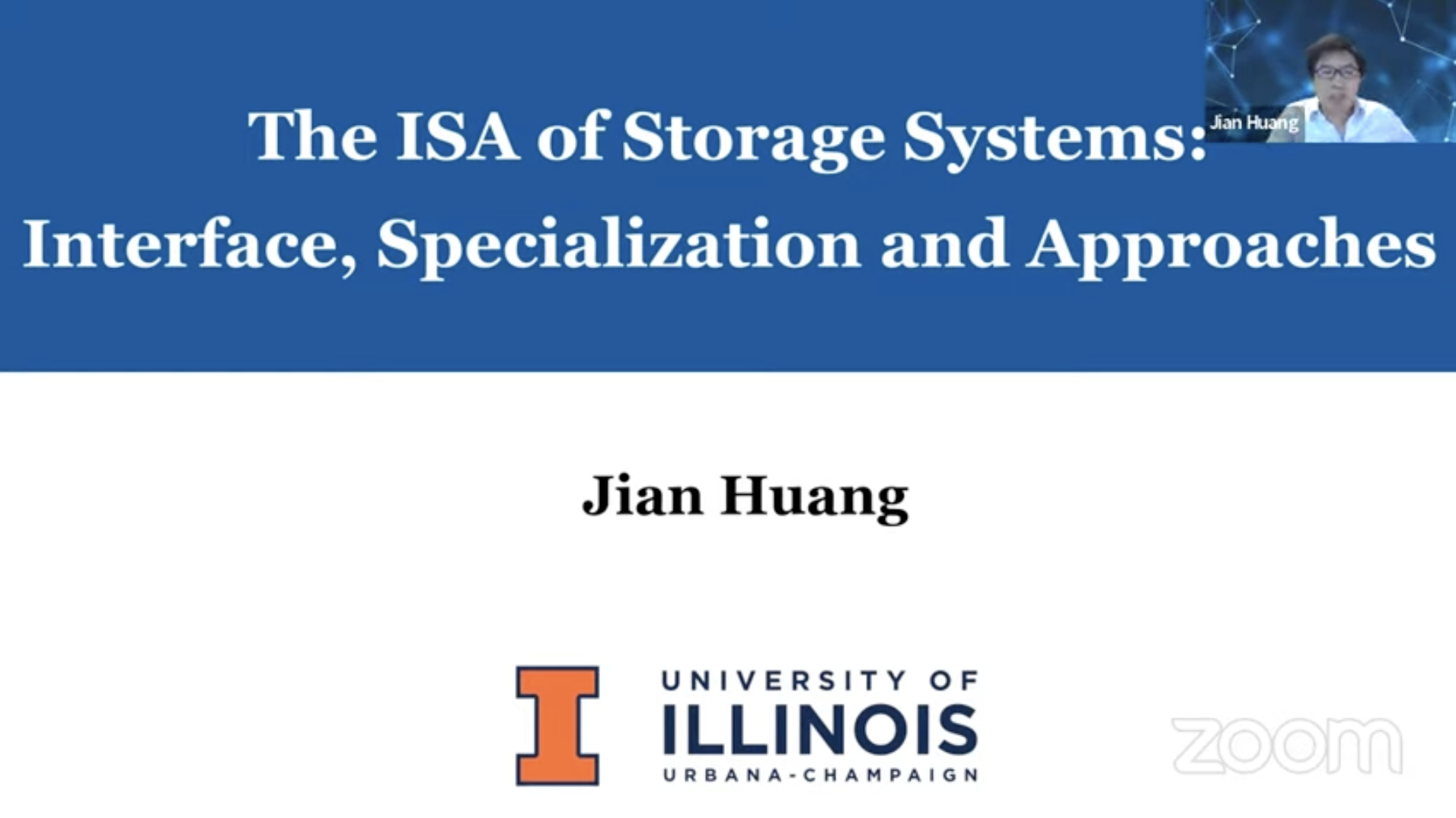
OSDI • 03/25/2022
We present BlockFlex, a learning-based
storage harvesting framework, which can harvest available
flash-based storage resources at a fine-grained granularity
in modern cloud platforms. We rethink the abstractions of
storage virtualization and enable transparent harvesting of
both allocated and unallocated storage for evictable VMs.
BlockFlex explores both heuristics and learning-based
approaches to maximize the storage utilization, while ensuring
the performance and security isolation between regular
and evictable VMs at the storage device level.

ASPLOS • 11/15/2021
Encryption ransomware has become a notorious malware. It encrypts user data on storage devices like solid-state drives (SSDs)
and demands a ransom to restore data for users. To bypass existing
defenses, ransomware would keep evolving and performing new
attack models. To enhance the robustness of SSDs against these attacks, we
propose RSSD, a ransomware-aware SSD. It redesigns the flash
management of SSDs for enabling the hardware-assisted logging,
which can conservatively retain older versions of user data and
received storage operations in time order with low overhead.

MICRO • 07/14/2021
In-storage computing with modern solid-state drives (SSDs) enables
developers to offload programs from the host to the SSD. It has been
proven to be an effective approach to alleviate the I/O bottleneck. However, since modern SSD controllers do not have
a trusted execution environment, an offloaded (malicious) program
could steal, modify, and even destroy the data stored in the SSD. To defend against these
attacks, we build a lightweight trusted execution environment,
named IceClave for in-storage computing. IceClave enables security isolation between in-storage programs and flash management
functions that include flash address translation, data access control,
and garbage collection.

MICRO • 07/14/2021
We propose the concept of Distributed Data Persistency (DDP) model, which is the binding of the memory persistency
model with the data consistency model in a distributed system. We
reason about the interaction between consistency and persistency
by using the concepts of Visibility Point and Durability Point. We
design low-latency distributed protocols for DDP models that combine five consistency models with five persistency models. For
the resulting DDP models, we investigate the trade-offs between
performance, durability, and intuition provided to the programmer.





